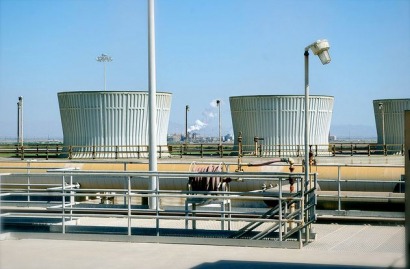
The Annual U.S. Geothermal Power Production and Development Report shows that the industry currently has 3,187 MW of installed capacity, significantly outpacing every other country in the world. As a renewable, base-load energy supply, geothermal has the potential to replace coal and other non-renewable power sources.
Currently, geothermal electric power generation is occurring in eight US states, including Alaska, California, Hawaii, Idaho, Nevada, Oregon, Utah and Wyoming.
An additional seven states -- Arizona, Colorado, Louisiana, New Mexico, North Dakota, Texas and Washington -- have geothermal capacity in development.
California continues to lead the way when it comes to geothermal energy, the association found.
The state ranks first in overall installed capacity, with 2,615 MW already online, and it has nearly 2,000 MW of capacity in development. Nevada is also ahead of the pack, with 59 projects currently in development, more than any other state.
The implementation of binary geothermal technology has enabled the industry to develop lower temperature resources, which has expanded the geothermal industry’s geographical footprint beyond California, especially in the last decade.
“Demonstrating the abilities of geothermal systems to produce power from lower temperature systems, such as oil and gas coproduced geothermal, is pushing out the boundaries for geothermal power to encompass over a third of the U.S.,” said Karl Gawell, the association's Executive Director.
“We’ve seen slow but steady growth for geothermal, even in a challenging economy. The drivers for that growth have been state renewable portfolio standards, federal tax credits, DOE demonstration project support, and the fact that utility scale geothermal energy offers clean baseload energy that’s competitive with other clean energy technologies,” Gawell said. “The geothermal industry looks to our policy leaders to provide a stable environment to foster growth that could lead the U.S. toward greater energy independence.”
In the past year, capacity was installed by four different geothermal companies. Energy Source completed its 49.9 MW Hudson Ranch I project in Imperial Valley, Calif. during the first quarter of 2012, while Ormat Technologies finished 26 MW worth of projects over the past year. Terra-Gen completed a 1.9 MW expansion project in Nevada, and U.S. Geothermal expanded electricity generation at its San Emidio resource that replaced old generating equipment at the site with a new 12.75 MW power plant.
“As the economy strengthens, our industry is expected to bring even more geothermal capacity online in the coming years,” Gawell said. “In 2012, another 100 MW of capacity is expected to come online representing nearly one billion dollars of investment in the clean energy economy.”
For additional information:

